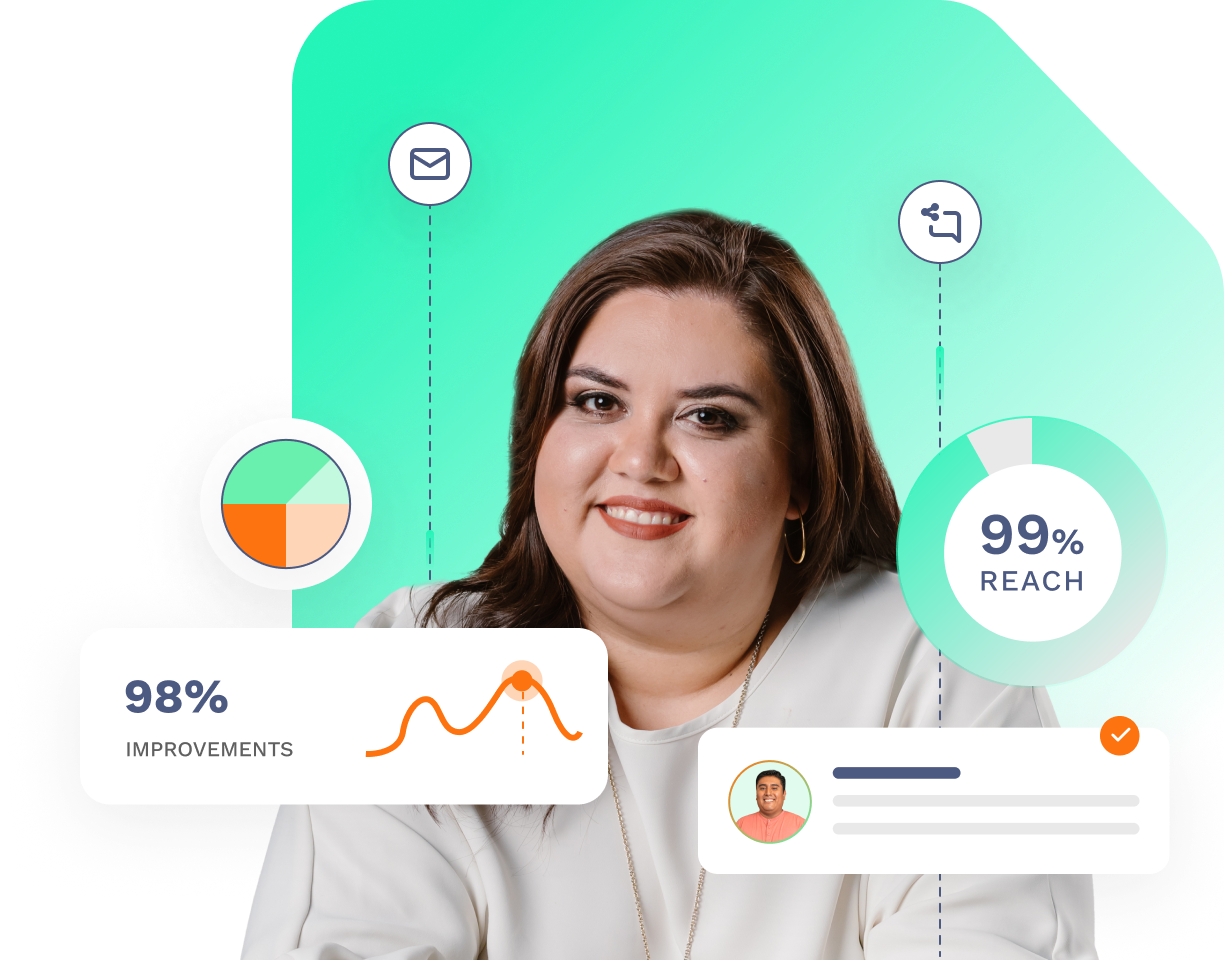Website Development
10 most common mistakes on educational institution websites and how to avoid them

Lourdes Calderón
Lourdes Calderón | Oct 28, 2025 | 5 MIN READ
Oct 28, 2025 5 MIN READ

An educational institution's website is much more than just a letter of introduction; it is an essential tool for attracting, informing and converting prospective students. However, many educational websites make mistakes that can affect their effectiveness and, ultimately, their ability to attract new students. In this article, we will explore the most common mistakes on educational websites and provide practical solutions to avoid them.
1. Outdated and unattractive design
The Problem
An outdated or unattractive web design can convey a negative image of the institution. Users expect modern, clean, easy-to-navigate interfaces. A website that looks like it has been left in the past can cause visitors to doubt the quality of education offered.
The solution
Invest in a redesign that contemplates:
-
Responsive design: Adaptable to mobile and tablet devices.
-
Modern aesthetics: Use of current colors, fonts and visual elements.
-
Intuitive navigation: Clear and accessible menus.
2. Disorganized or hard to find content
The problem
Key information, such as academic programs, admission requirements and costs, should be easily accessible. If users must make multiple clicks or navigate endless pages to find what they are looking for, they are likely to leave the site frustrated.
The solution
-
Clear structure: Organize content into logical categories.
-
Featured links: Place shortcuts to important information on the home page.
-
Efficient search: Implement an effective internal search function.
3. Complicated contact forms
The Problem
Long and complicated forms can discourage users from completing an inquiry or request. In addition, the lack of clear confirmations after submission can lead to uncertainty.
The solution
-
Simplicity: Request only essential information.
-
Confirmations: Display thank you or confirmation messages after submission.
-
Accessibility: Make sure the form is easy to find and use.
4. Lack of optimization for mobile devices
The Problem
With the increased use of smartphones and tablets, a website that is not optimized for these devices can be difficult to navigate and frustrating for users.
The solution
-
Responsive design: Ensure that the site adapts to different screen sizes.
-
Regular testing: Verify the site's performance on various devices and browsers.
-
Loading speed: Optimize images and scripts for fast loading times.
5. Outdated content
The Problem
Outdated information, such as dates of past events, programs no longer offered, or old prices, can confuse users and damage the institution's credibility.
The solution
-
Periodic review: Establish a calendar to update content regularly.
-
Historical archives: Maintain a section of past news or events without interfering with current information.
-
Clear communication: Clearly indicate when information was last updated.
6. Lack of clear calls to action
The problem
A website without clear indications on what to do next can leave users undecided and prone to abandon the page without interacting.
The solution
-
Visible buttons: Place calls to action (CTAs) such as "Request Information," "Apply Now," or "Schedule a Visit" in prominent places.
-
Persuasive language: Use active verbs that encourage action.
-
Strategic placement: Place CTAs at key points in the user's path.
7.Ignoring web accessibility
The Problem
Failing to consider the needs of users with disabilities can exclude a significant portion of the audience and, in some cases, violate legal regulations.
The solution
-
WCAG compliance: Ensure that the site complies with the Web Content Accessibility Guidelines.
-
Assistive tools: Implement screen readers and high contrast options.
-
Accessibility testing: Conduct periodic audits to identify and correct barriers.
8. Failure to integrate with relationship management tools (CRM).
The Problem
Without proper integration with a CRM, the institution may miss opportunities for follow-up and lead conversion.
The Solution
-
Automation: Set up forms that feed directly into the CRM.
-
Segmentation: Categorize prospects according to their interest and stage in the admissions process.
-
Personalized follow-up: Send communications tailored to the needs of each prospect.
9. Not optimizing for search engines (SEO)
The problem
A website that is not optimized for SEO can go unnoticed in search results, limiting its visibility.
The solution
-
Relevant keywords: Include terms that potential users would search for.
-
Quality content: Publish articles, blogs and resources that answer common questions.
-
Technical optimization: Improve loading speed, use appropriate tags and make sure the site is crawlable by search engines.
10. Not measuring site performance
The problem
Without analysis tools, it is difficult to know which parts of the site are working and which need improvement.
The solution
-
Analytics tools: Implement Google Analytics or other platforms to monitor traffic and user behavior.
-
Clear KPIs: Establish key performance indicators such as conversion rate, time on site and bounce rate.
-
Data-driven adjustments: Use the information gathered to make continuous improvements.
Conclusion
Avoiding these common mistakes can make the difference between an educational website that attracts and converts prospective students and one that drives them away. By implementing the proposed solutions, institutions can improve the user experience, increase trust, and ultimately boost their ability to recruit. Remember that the website is the first digital impression of your institution; make sure it is positive and effective.
TABLE OF CONTENTS
Stay Updated with Our
Latest Posts
Subscribe now to receive the freshest content, insights, and updates directly in your inbox.

Recent Articles


2024 © The Orange Box Agency – All rights reserved



.png?width=90&height=90&name=facebook%20(1).png)
.png?width=94&height=96&name=Vector%20(1).png)